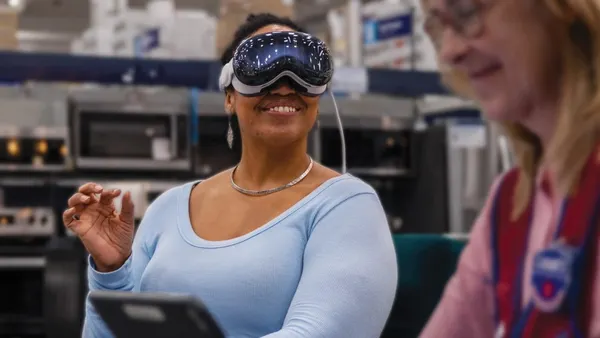Self-checkout first appeared in grocery stores 38 years ago with the promise that it would enable faster, easier checkout experiences for consumers. The technology has become a staple in many stores, but businesses are still experimenting with how to optimize self-checkout for customers’ convenience.
Some retailers, like Dollar General, are putting greater emphasis on keeping stores well-staffed for checkout assistance. Others, like Target, are limiting self-checkout registers to 10 items to keep queues moving.
Meanwhile, Aldi is piloting its first fully automated checkout system in the United States, and retailers outside the country are embracing a wide range of self-checkout technologies — including facial recognition to pay — that offer new, potentially even more convenient ways to shop.
The technology has come a long way since Kroger first piloted the technology. While companies are taking different paths, self-checkout still has a place in the store experience — as do cashiers, according to Sandeep Unni, senior director analyst at Gartner’s retail industry practice.
“I don’t believe that self-checkout will supplant traditional checkout lanes in a store,” Unni said in an email to CX Dive. “Nor do I believe in the notion that self-checkout is universally hated and will be going away. In my mind the narrative is not binary.”
When self-checkout falls short
Self-checkout isn’t trouble free.
Many current implementations use essentially the same technology popularized decades ago, Unni said. Scanning items on these kiosks can be clunky, and they often rely on frustrating features like produce scales or ID verification that slow down the experience.
“Wherever a self-checkout introduces additional friction, it’s going to fall short on convenience for shoppers,” Sara Alloy, retail experience lead for North America at Publicis Sapient, said in an email to CX Dive. “Most of these friction points involve excessive interaction with a sales employee, which is what self-checkouts are designed to remove.”
A great self-checkout experience eliminates friction wherever possible, according to Alloy. Even minor annoyances can frustrate busy shoppers who choose an automated experience to complete their transaction as quickly as possible.
Alloy points to payment as an example of friction. Self-checkout kiosks often accept a wide range of payment options. However, many force a customer to pick a method before they can pay instead of automatically responding to whichever one the customer decides to use. That slows down the experience, she said.
Humans are still important
While customers in the self-checkout line often don’t want to speak with an employee, that doesn’t mean it’s an excuse to skimp on cashiers. Self-checkout is a complement to the standard checkout experience — not a replacement, according to Unni.
“All too often, we see retailers install [self-checkout] lanes and then shut down all but a couple of manned lanes in an attempt to save on labor,” Unni said. “That is not the answer!”
He added that cutting down on associates at traditional checkout lanes contributes to longer lines and additional work for customers — which ultimately adds more friction to the overall experience.
While self-checkout kiosks shouldn’t require employee intervention, having help nearby can be beneficial, according to Alloy. Having an associate on hand instills confidence in the shopper that, even if they run into a problem, someone can quickly help them resolve it.
Humans will remain important to a good checkout experience even as retailers implement better self-checkout options.
“Traditional checkouts are still a great option for the varying needs of customer groups who may have challenges accessing a self-checkout system, no matter how frictionless it is,” Alloy said.
Neither traditional self-checkout nor fully manned registers offer a perfect checkout experience by themselves, according to Alloy. These options work best in tandem so each approach can cater to different customers and transactions as needed












